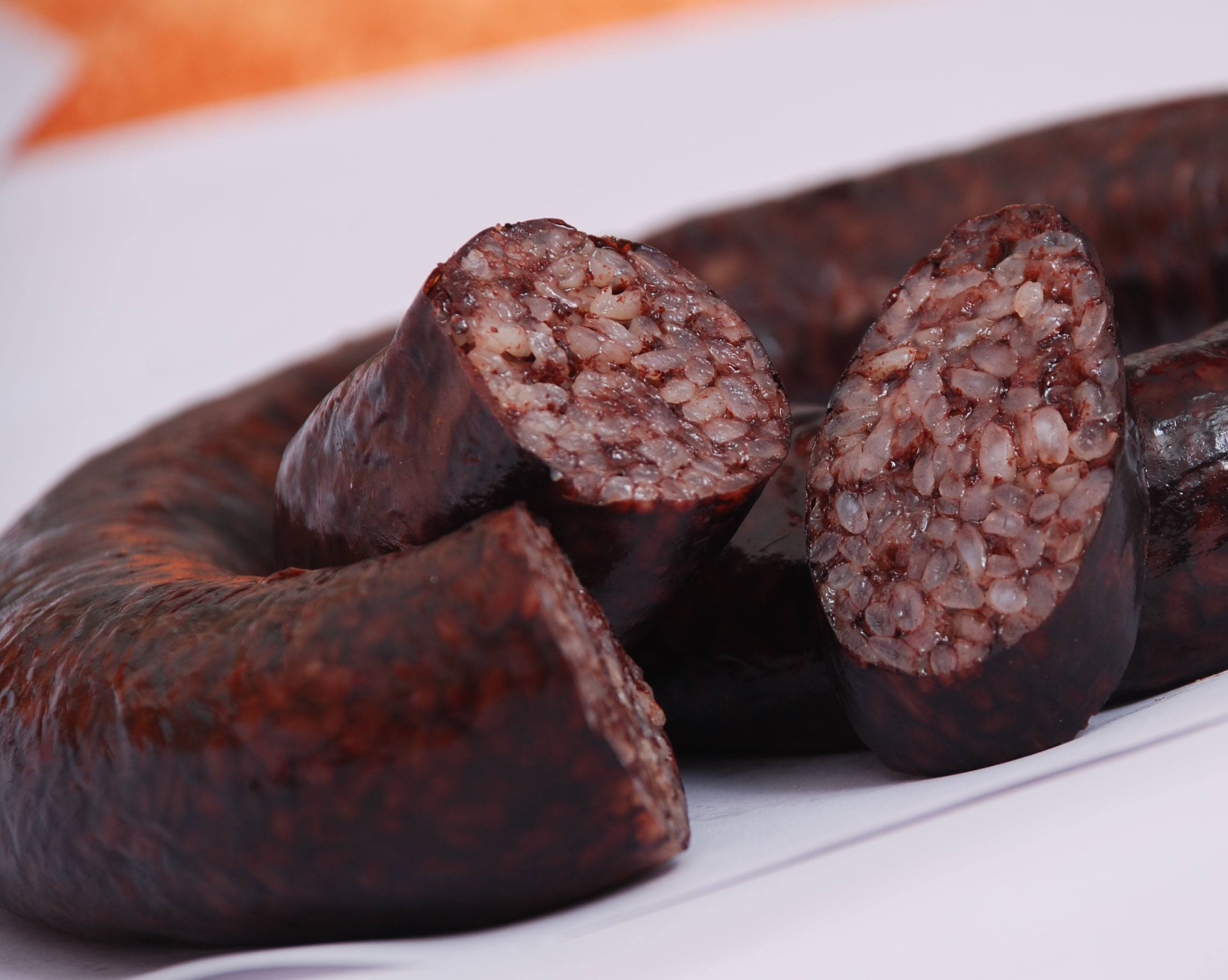The lifeblood of sausages, hotpots and soups
The Chinese idiom “devour raw meat and fowl” describes how primitive man ate before he learned to cook with fire. He drank raw blood.
Nowadays, of course, that menu is much more refined but the basic elements haven’t changed. Blood has become part of fine cuisine in many parts of the world, including China.
Tofu or blood?
When the fresh blood is gathered during the slaughter of livestock and poultry, it is commonly solidified for further use in cooking.
In Chinese, it’s simply called “blood tofu” because solidified blood resembles the silky texture of tofu.
Blood tofu, also called “blood curd,” is commonly made from the blood of duck and pig. Sometimes chicken and goat blood is used.
Duck blood tofu is regarded as the cleanest and most nutritious. It is also more expensive than pork blood tofu, and consumers have to be on guard against unscrupulous peddlers who switch one for the other.
To spur coagulation, salt is added to fresh blood, which is then set aside for 30 minutes before the container is placed in warm water at a temperature of about 75 degrees Celsius.

Duck blood
Duck blood and vermicelli soup is a popular street food. The dish originated in the city of Nanjing, but it is now enjoyed across China. Soup shops selling this delicacy are easy to find here in Shanghai.
The soup has a broth made of duck bones. The offal of the duck, including the liver, intestines, heart and gizzard, are scalded in boiling water before being braised in a spicy stock for additional flavor.
Sliced pieces of duck blood tofu are cooked in boiling water, then added to the hot soup base. In a separate pot, the vermicelli is cooked and then added to the soup bowl with offal, ginger and cilantro.
This dish, which is said to provide instant energy, is popular for breakfast and dinner.

Duck blood and vermicelli soup served in clay pot
In Sichuan cuisine, duck blood tofu is used to make a classic dish called maoxuewang, or Chongqing-style duck blood and tripe soup. It comes in a spicy broth of added Sichuan peppercorns and chili peppers.
Maoxuewang also features tripe, pork meat, eel, soybean sprouts, squid rings, luncheon meats and dried day lilies. All of these rich-flavored foods are cooked in a rich stock containing Sichuan peppercorns, dried chili peppers and doubanjiang, a Sichuan condiment made from fermented broad beans.
This dish is very hearty and a prime example of Chongqing cooking. It is accompanied by bowls of steamed rice.
In Shanghai, maoxuewang can be found in restaurants specializing in Sichuan and Chongqing cuisine.
Blood tofu generally has no strong taste or smell. Its silky texture absorbs other flavors, making it ideal to use in spicy hotpots.
áO house, a popular Taiwanese hotpot restaurant on Fumin Road, is known for its spicy duck blood and tofu soup.

Spicy duck blood tofu
Devilish sausages
Blood is often used in making sausage in China. Some recipes use only blood, while others mix in meat and glutinous rice.
In the northeastern provinces, blood sausage made from fresh pork blood stuffed into pork-intestine casings is a traditional delicacy. The pork blood is seasoned with salt, cilantro, Sichuan peppercorns and white pepper. The filled casings are boiled and then cooled for eating.
Pork blood sausage with pickled Chinese cabbage and pork belly is a hearty stew very popular in winter.
In northern China, sausages are also made from goat blood. Heavy flavorings reduce the strong taste and smell.

Pork blood sausage with pickled Chinese cabbage and pork belly meat
In southern China, the popular blood sausage is made by mixing fresh pork blood and various spices with glutinous rice.
The mixture is then stuffed into casings of pork intestines and steamed to cook thoroughly. The finished sausages are often cut into slices that are pan-fried until they turn glossy on the surface.
Pig blood cake is a popular Taiwanese snack made of pork blood and glutinous rice.
It’s basically a blood sausage minus the casing. It is often sold on a stick in night market stalls.
Pig blood cake can be fried or steamed, then rolled in peanut flour to serve.

Glutinous rice blood sausage
Blood dishes across the world
Britain: Black pudding is one of the most famous blood delicacies worldwide. This blend of pork fat, pork blood, onions, oatmeal and flavorings is considered a breakfast favorite in Britain, where it is grilled or lightly fried.
Italy: In Naples, sanguinaccio dolce, a sweet blood pudding, is traditionally
prepared for carnival festivals. It’s made by mixing pork blood with chocolate, milk, pine nuts, raisins and sugar. The taste is sweet, salty and slightly metallic.
Nordic: A blood pancake made of whipped blood and other ingredients called blodpl?ttar is served in Nordic countries.
Poland: In Polish cuisine, czernina is a traditional duck blood soup that blends fresh blood with poultry broth. The dish is served with staples like noodles, boiled potatoes and dumplings.
Korea: Seonjiguk is made with coagulated blood and sundaeguk, a blood sausage that stuffs pork blood and various ingredients into cow or pork intestines. This soup is believed to be effective antidote for hangovers.

Seonjiguk















